Understanding Your Options for Rehab Loans - Part 2
Welcome back to understanding your options for rehab loans. In Part 1, we explored the benefits and various types of rehab loans available to help you finance your property. We also discussed the key qualifications and terms to consider when applying for a rehab loan.
In this second half, we will explore the practical aspects of securing a rehab loan and finding the right lender for your needs, helping you navigate the options, and identifying the best fit for your investment strategy. Additionally, we will dive into the rehab loan application process, providing you with a clear understanding of the steps involved and what you can expect along the way.
Whether you're a seasoned investor or just starting, these practical tips and strategies will help you unlock the full potential of rehab loans. So, let's continue our journey toward financial empowerment and dive into the essential steps for securing and utilizing rehab loans effectively.

Finding the right lender for your rehab loan
Selecting the right lender for a rehab loan is a crucial step in the investment process. Real estate investors should carefully evaluate their options and choose a lender that not only offers competitive terms but also aligns with their specific needs and investment goals.
For a rehab loan lender, investors should consider factors such as the lender's experience in the real estate investment market, their understanding of the unique challenges investors face, and their willingness to work collaboratively to achieve the desired outcomes. It's important to compare the interest rates, fees, and loan terms offered by different lenders. Some lenders may specialize in certain types of rehab loans, such as FHA 203(k) or Fannie Mae HomeStyle Renovation, while others may offer a more diverse range of options. By thoroughly researching and evaluating multiple lenders, real estate investors can increase their chances of finding the right financing solution for their needs.
The rehab loan application process
The rehab loan application process can vary depending on the type of loan and the lender, but there are some common steps that real estate investors can expect to encounter. The first step in the application process is to gather all the necessary documentation, including proof of income, asset statements, and details about the property being renovated. Lenders will typically require a comprehensive understanding of the borrower's financial standing and the proposed renovation project. Once the initial documentation is submitted, the lender will review the application and may request additional information or clarification. This may involve an appraisal of the property, which will help the lender determine the property's current value and the estimated value after the renovations are complete.
Tips for successfully using a rehab loan
Navigating the world of rehab loans can be a complex and challenging endeavor, but with the right strategies and best practices, real estate investors can maximize the benefits of these financing solutions and achieve their investment goals.
One of the most important tips for successfully using a rehab loan is to plan and budget the renovation project carefully. Investors should work closely with contractors, designers, and other industry professionals to accurately estimate the cost of materials, labor, and any unexpected expenses. By having a comprehensive understanding of the project's financial requirements, investors can ensure that the rehab loan provides sufficient funding to complete the renovations without going over budget.
A key tip is to maintain clear and open communication with the lender throughout the entire process. Rehab loans often involve multiple disbursements of funds as the renovation progresses, and lenders will typically require regular updates and inspections to ensure the project is on track. By keeping the lender informed and responsive to their requests, investors can build a strong working relationship and increase the likelihood of a successful loan experience.
Case studies: Successful real estate investors using Rehab Loans
To further illustrate the benefits of rehab loans and how they can empower real estate investors, let's explore a few case studies of successful investors who have utilized these financing solutions.
- John is a seasoned real estate investor who has been flipping properties for over a decade. When he came across a dilapidated house in a desirable neighborhood, he knew it had the potential to be transformed into a high-value asset. However, the property required extensive renovations that exceeded his available cash reserves. By securing a Fannie Mae HomeStyle Renovation loan, John was able to finance the purchase and the necessary repairs, allowing him to bring the property back to life and sell it at a significant profit.
- As a first-time real estate investor, Sarah set her sights on a fixer-upper that she believed could be a lucrative rental property. Although the property was priced well below market value, the extensive repairs required were daunting. Undaunted, Sarah explored her financing options and discovered the FHA 203(k) loan program. By combining the purchase price and the estimated renovation costs into a single mortgage, Sarah was able to secure the necessary funding and transform the property into a thriving rental unit.

Empowering real estate investors through rehab loans
In the dynamic world of real estate investing, rehab loans have emerged as a powerful financing solution that can empower investors to take on ambitious projects and achieve greater success. By understanding the various types of rehab loans, the qualification criteria, and the application process, real estate investors can unlock a world of opportunities and maximize their investment potential.
For a seasoned investor looking to flip properties or a first-time investor seeking to renovate and rent out a property, rehab loans can provide the necessary capital and flexibility to bring your vision to life. By working with the right lender and following best practices for using these financing solutions, you can navigate the challenges of property renovations and emerge as a more successful and empowered real estate investor.
If you embark on your real estate investment journey, remember that rehab loans are not just a means to an end but a tool that can help you redefine the boundaries of what's possible. Embrace the power of rehab loans and let them be the catalyst that propels your real estate ventures to new heights of success.
At BanCal, we are committed to helping you elevate your real estate ventures and achieve your investment goals. Our service-oriented property management team proactively takes care of and increases the value of your assets, end-to-end, with dedicated, personalized service. Curious about how we can help you maximize your investment potential? Contact us today to learn more.








